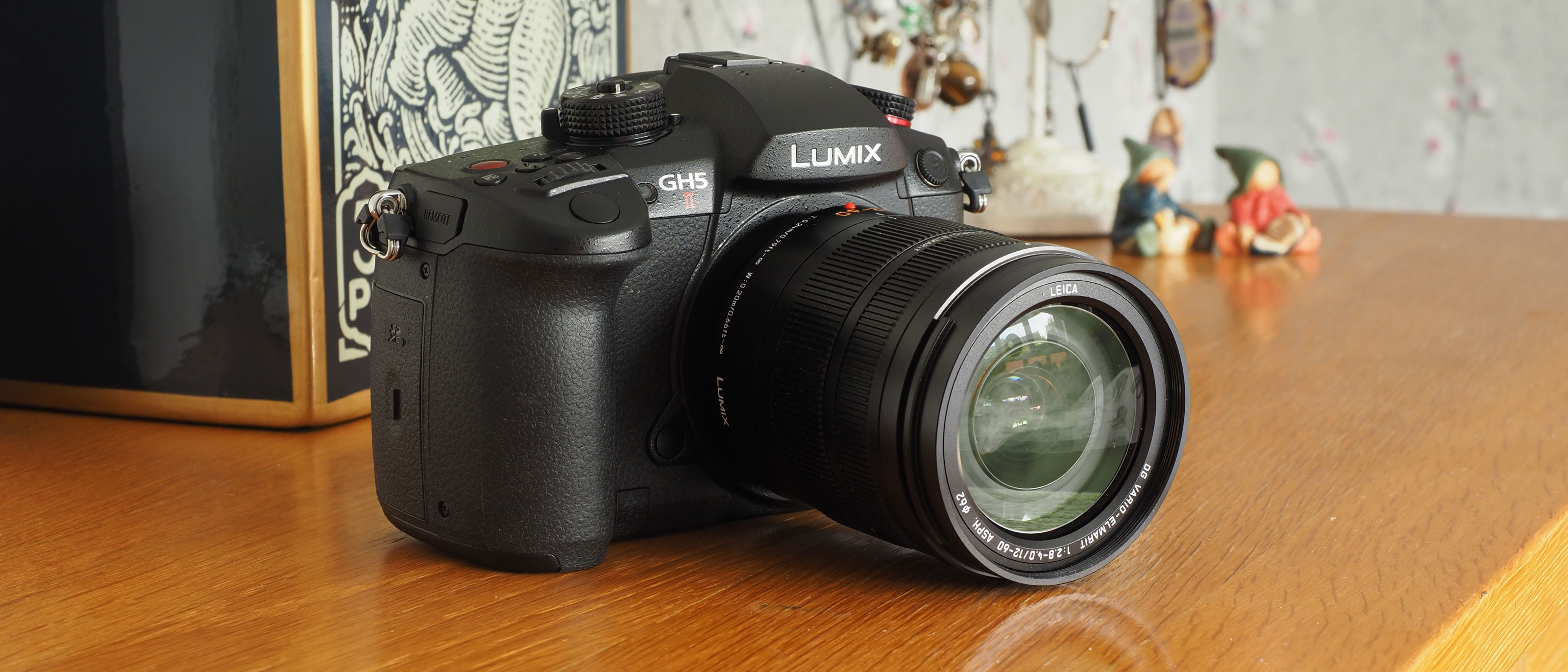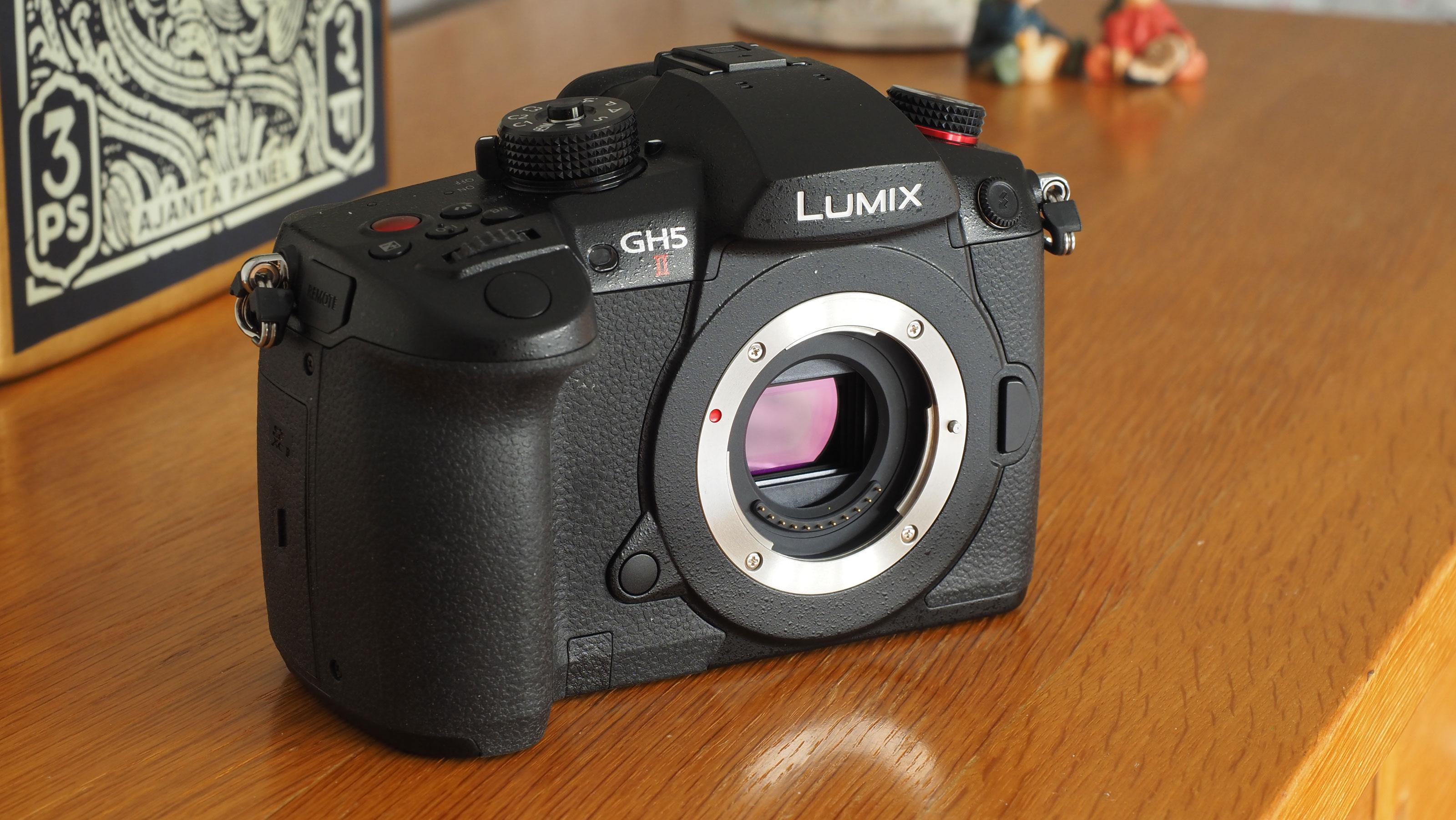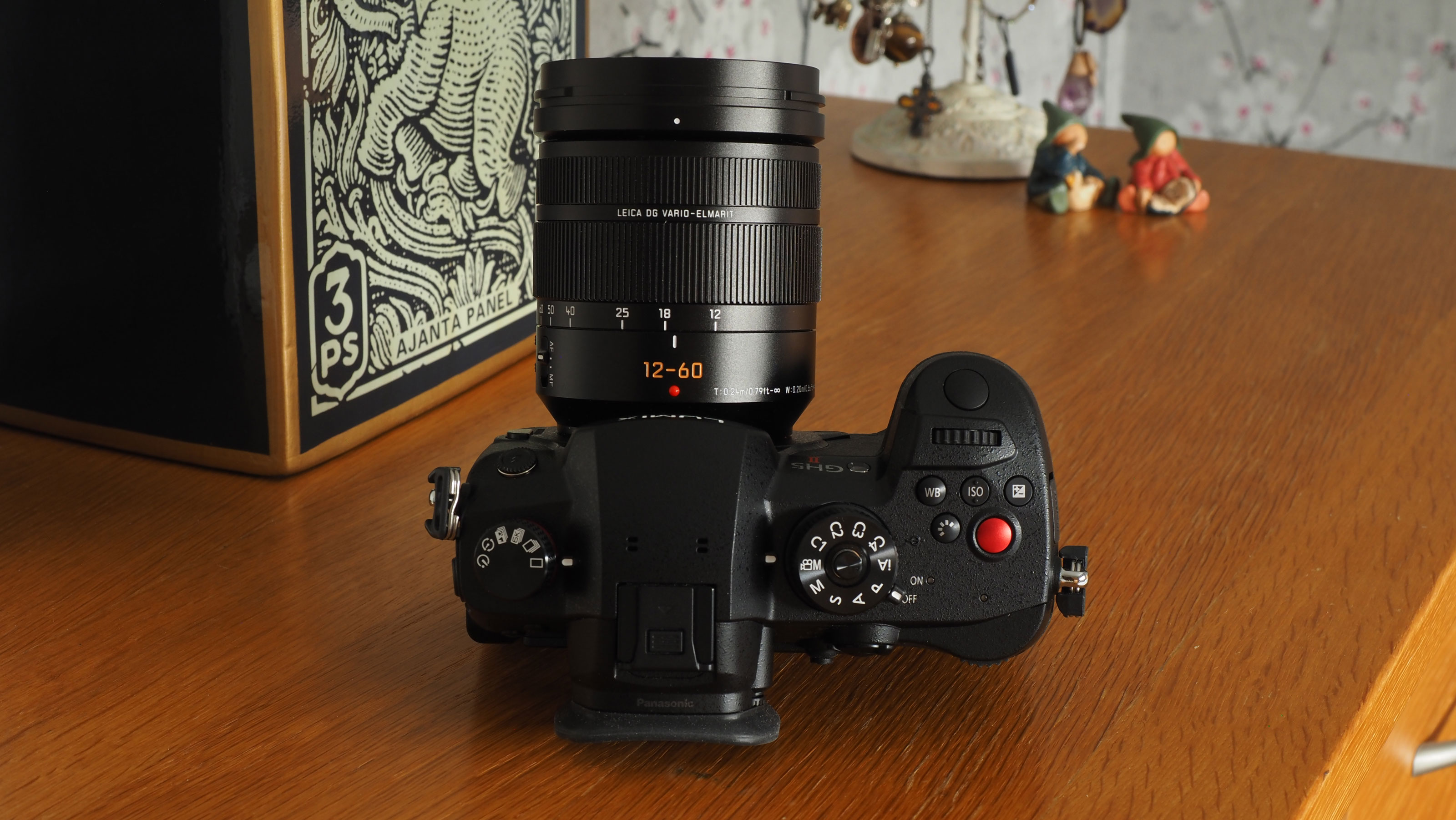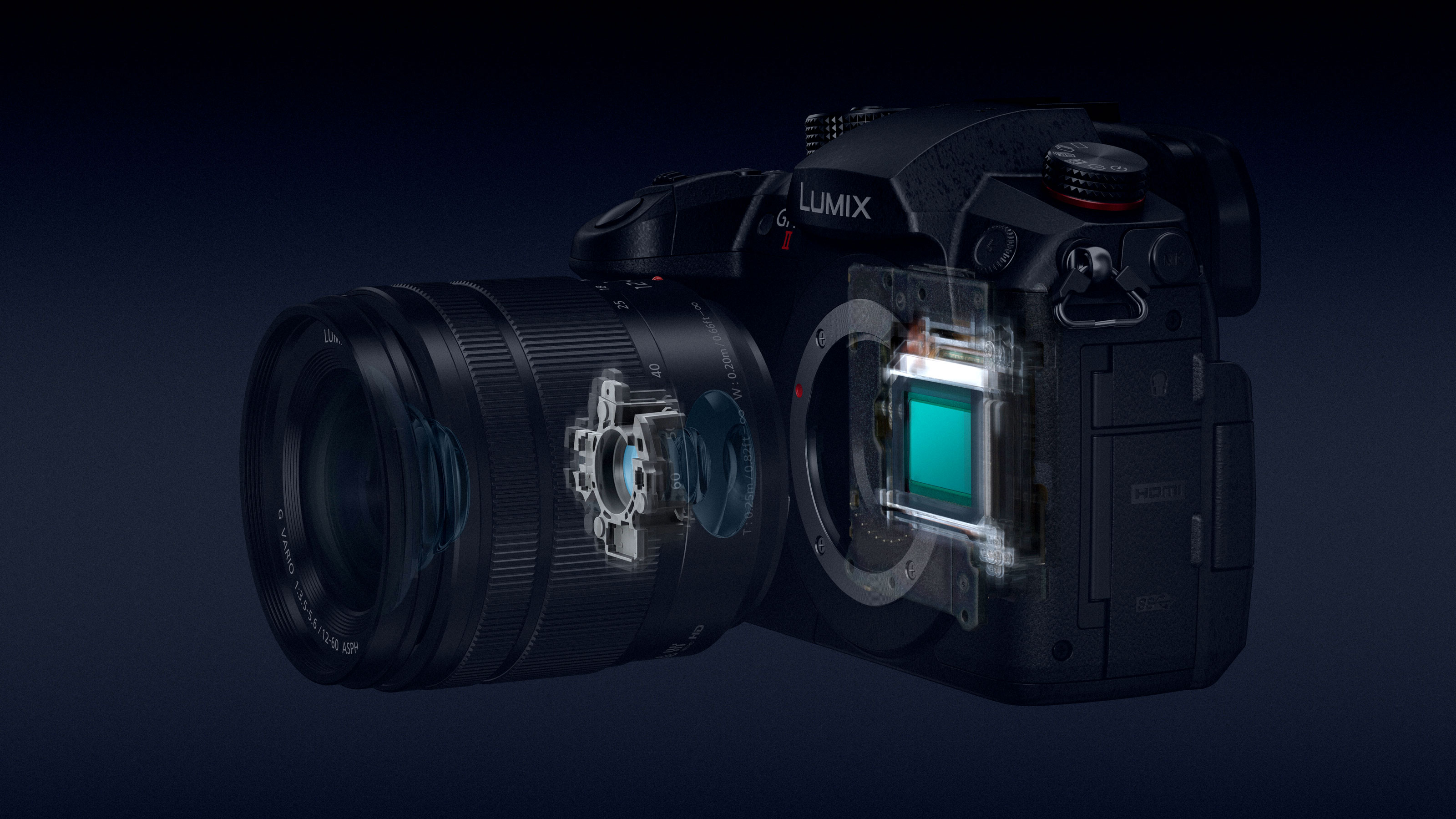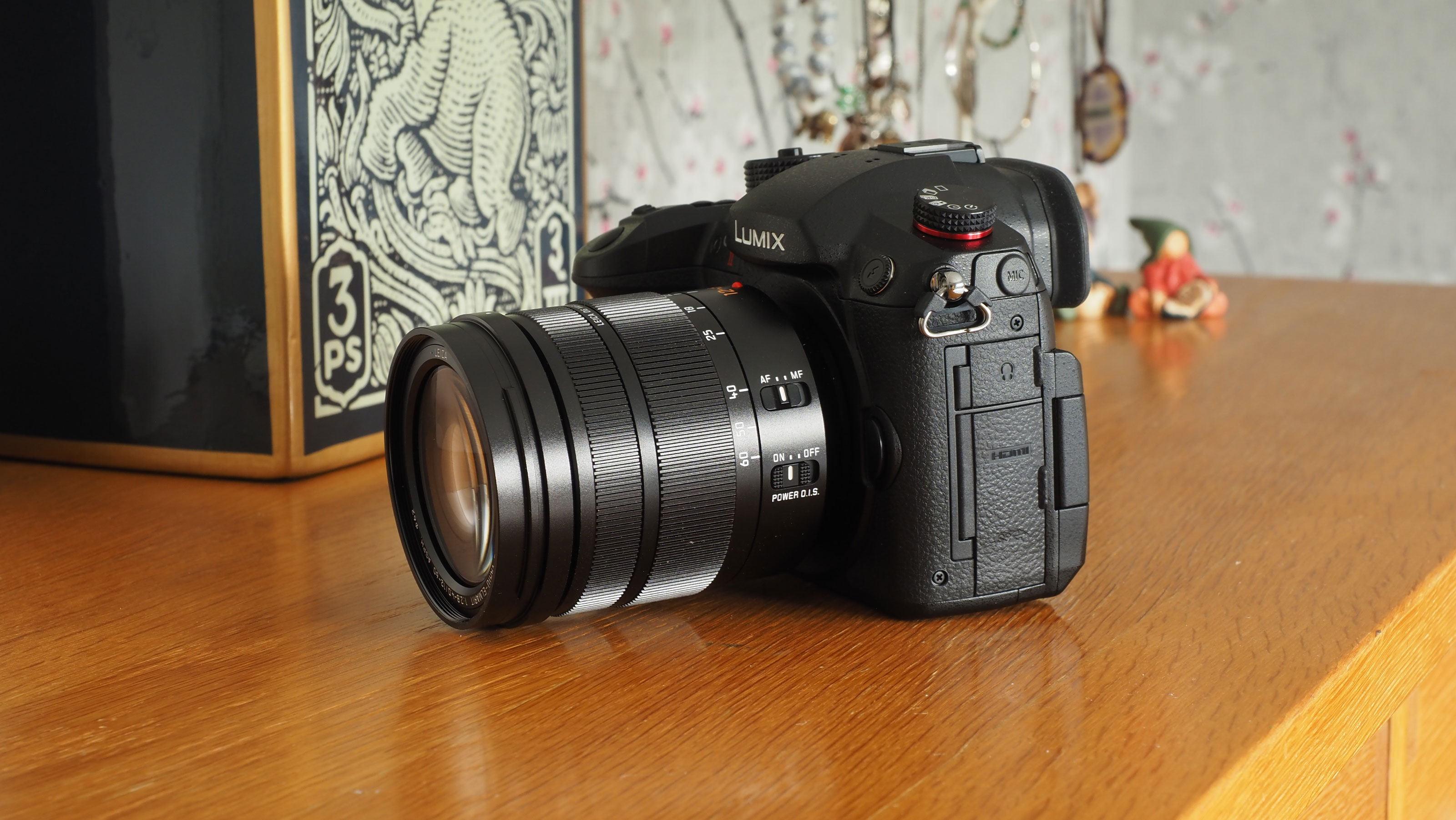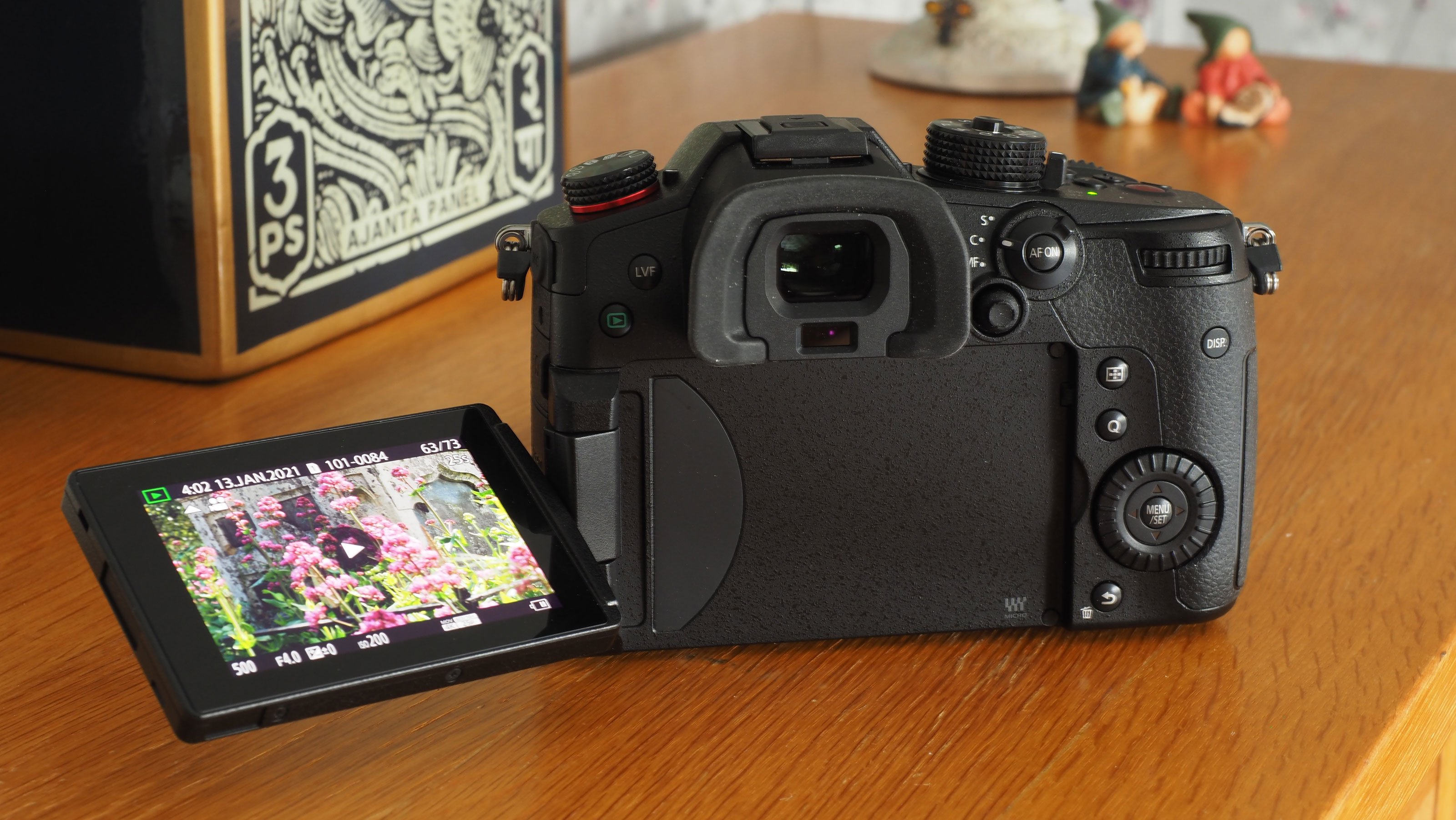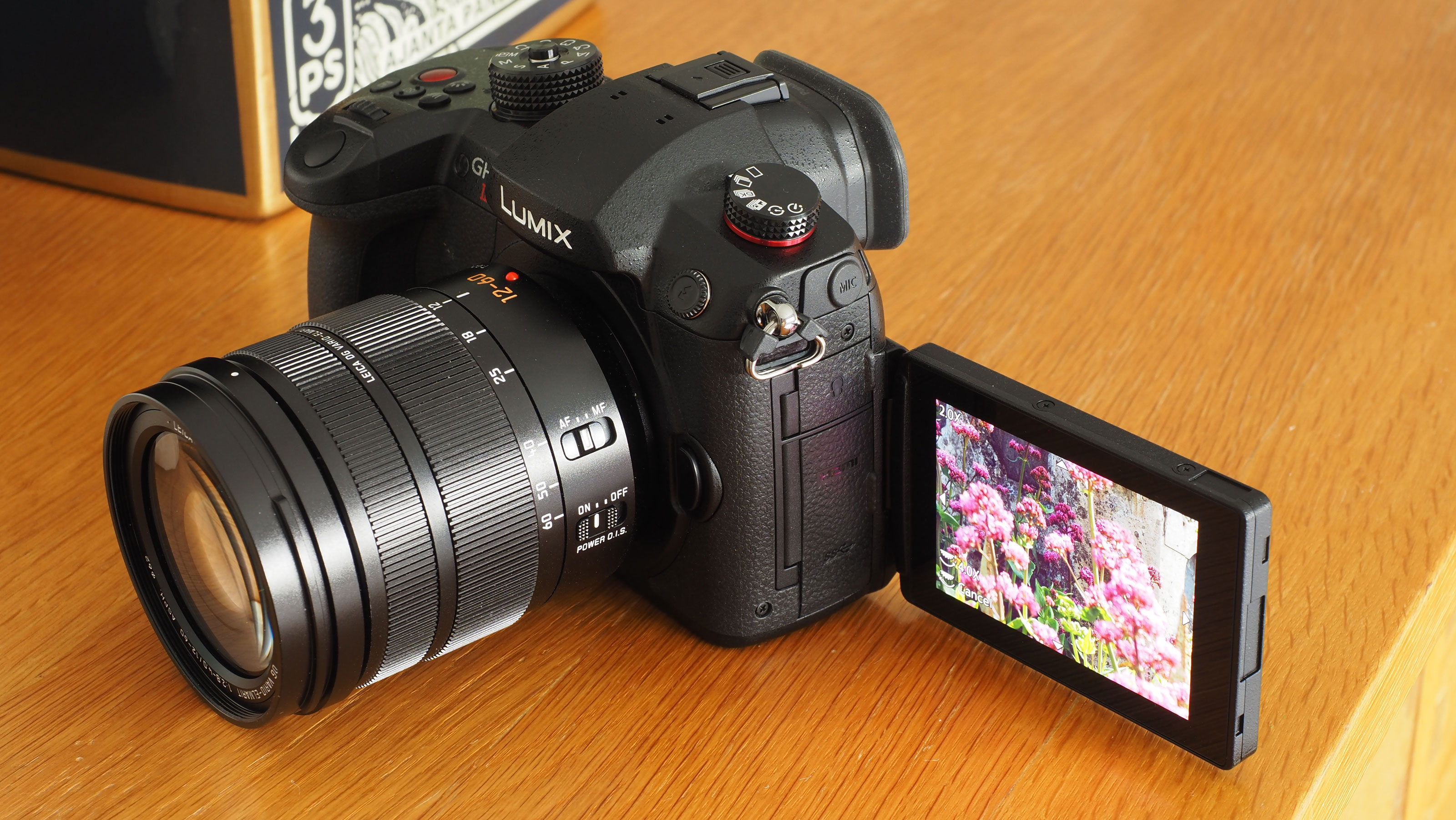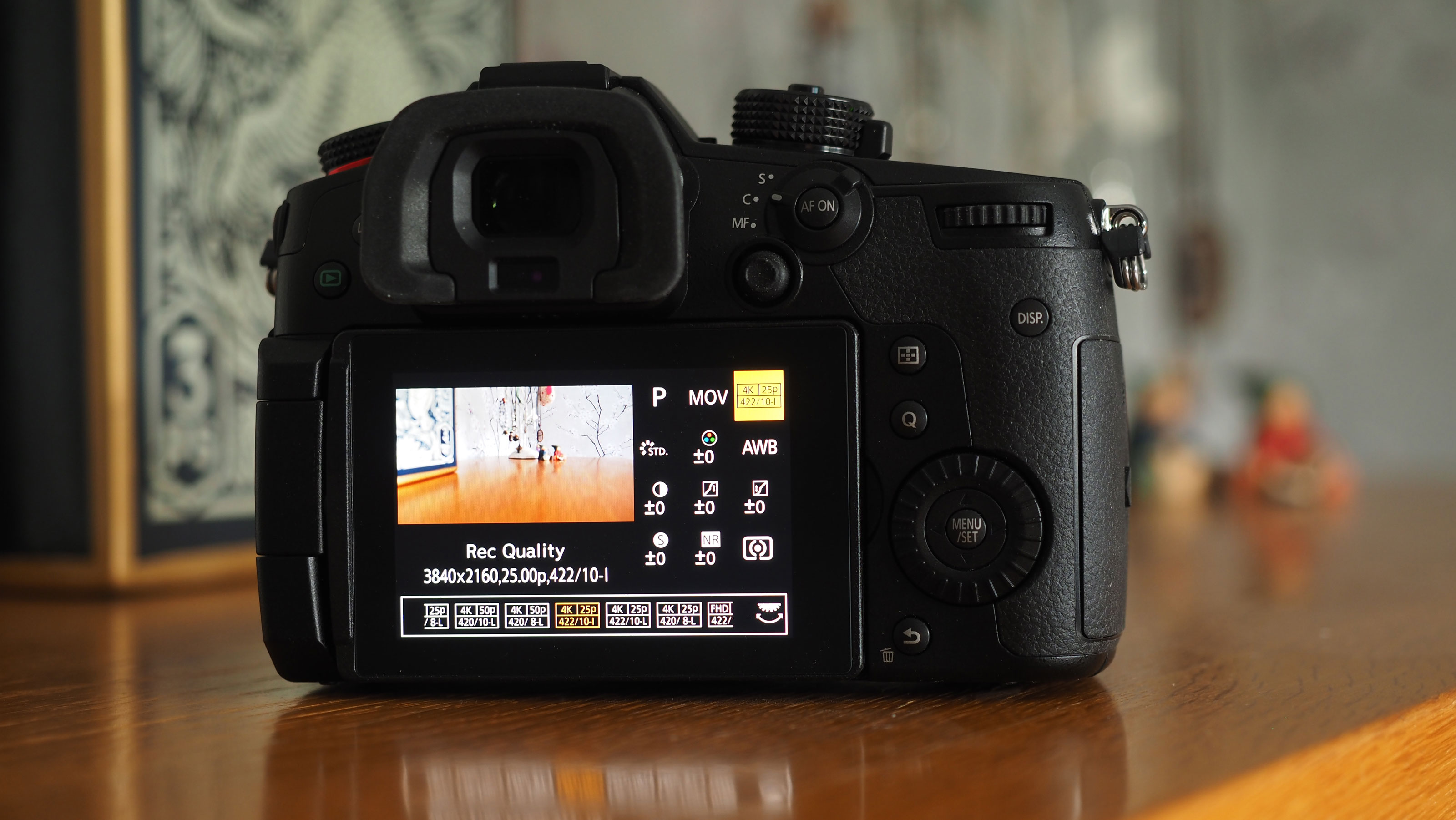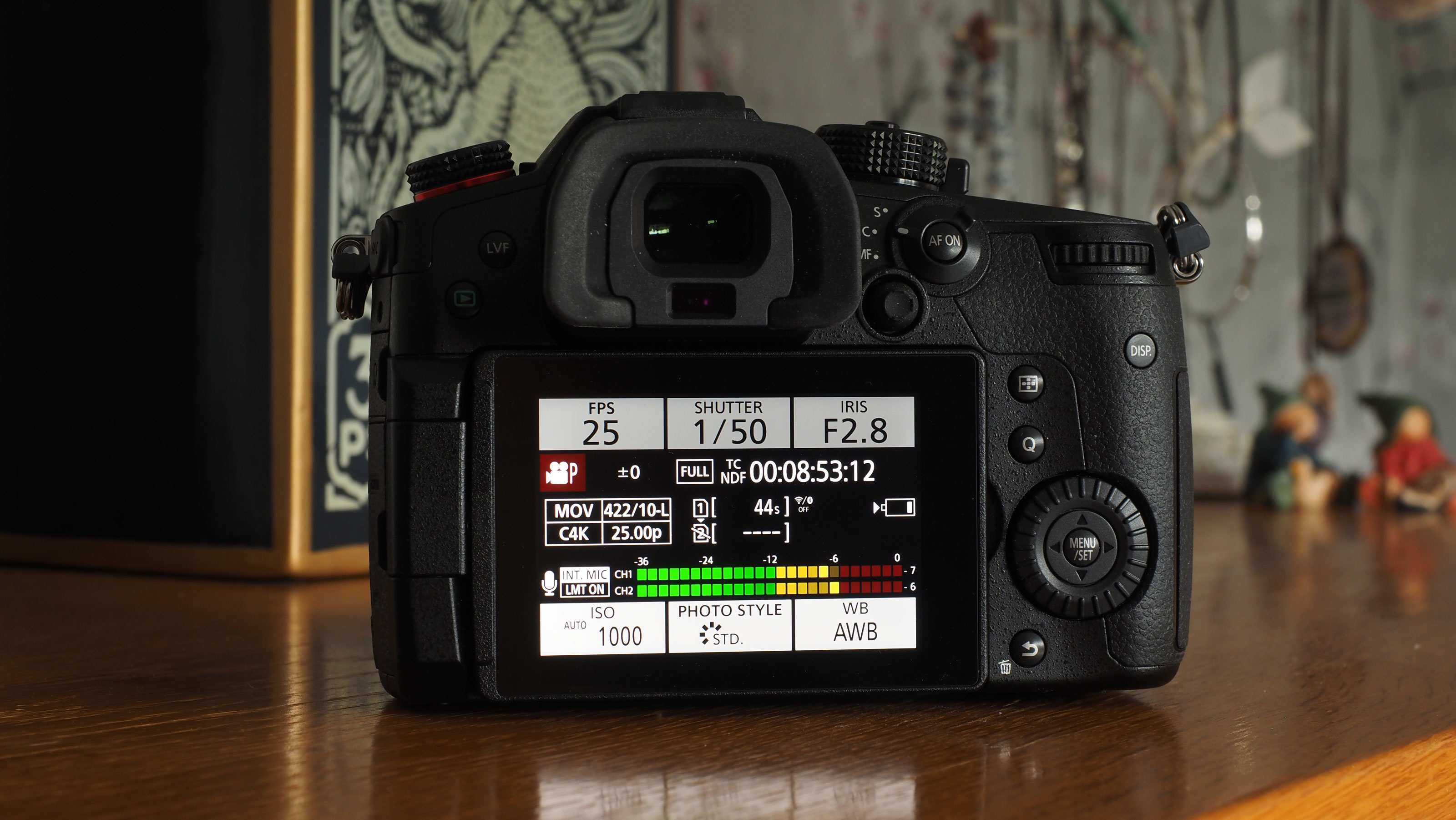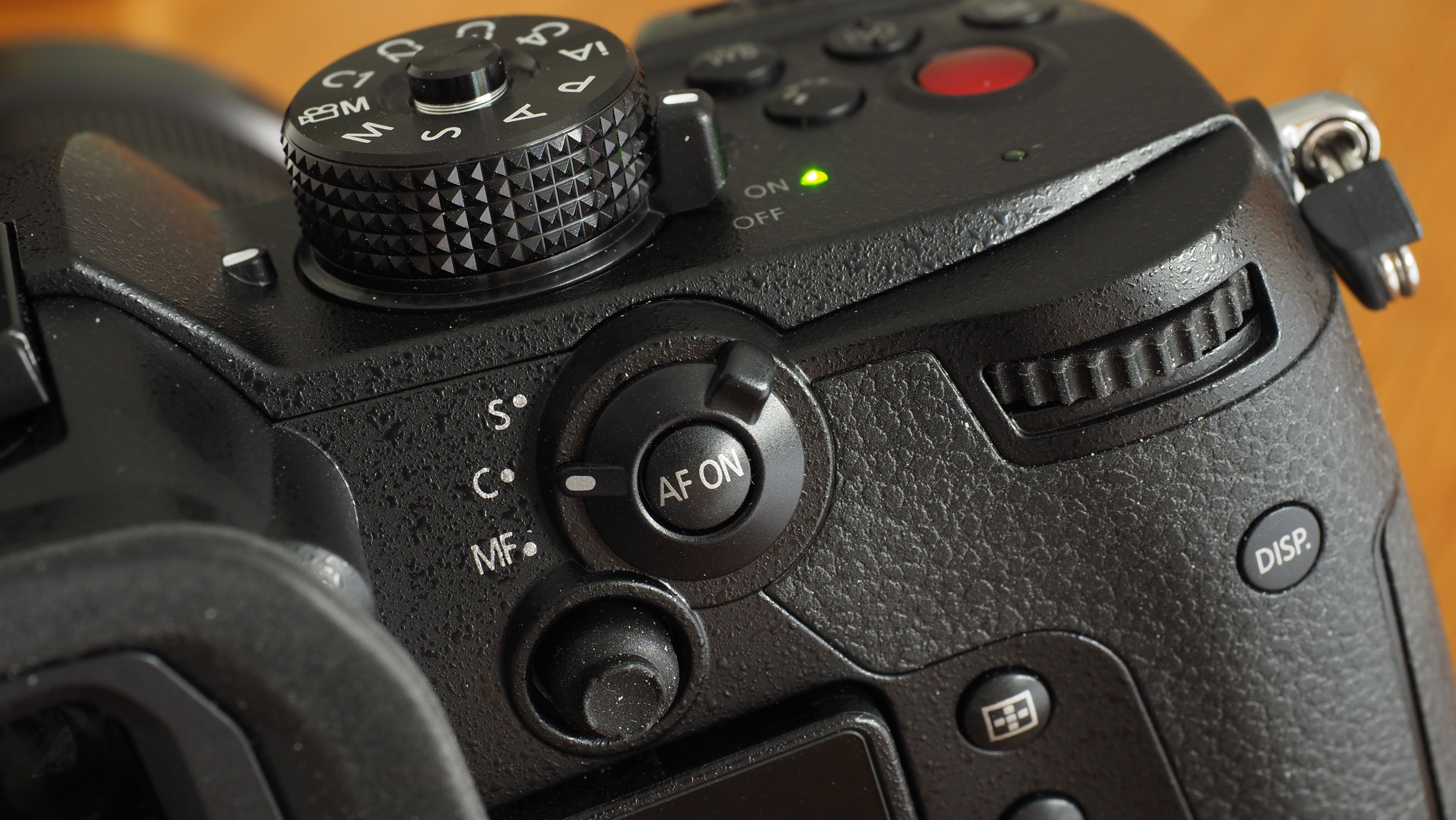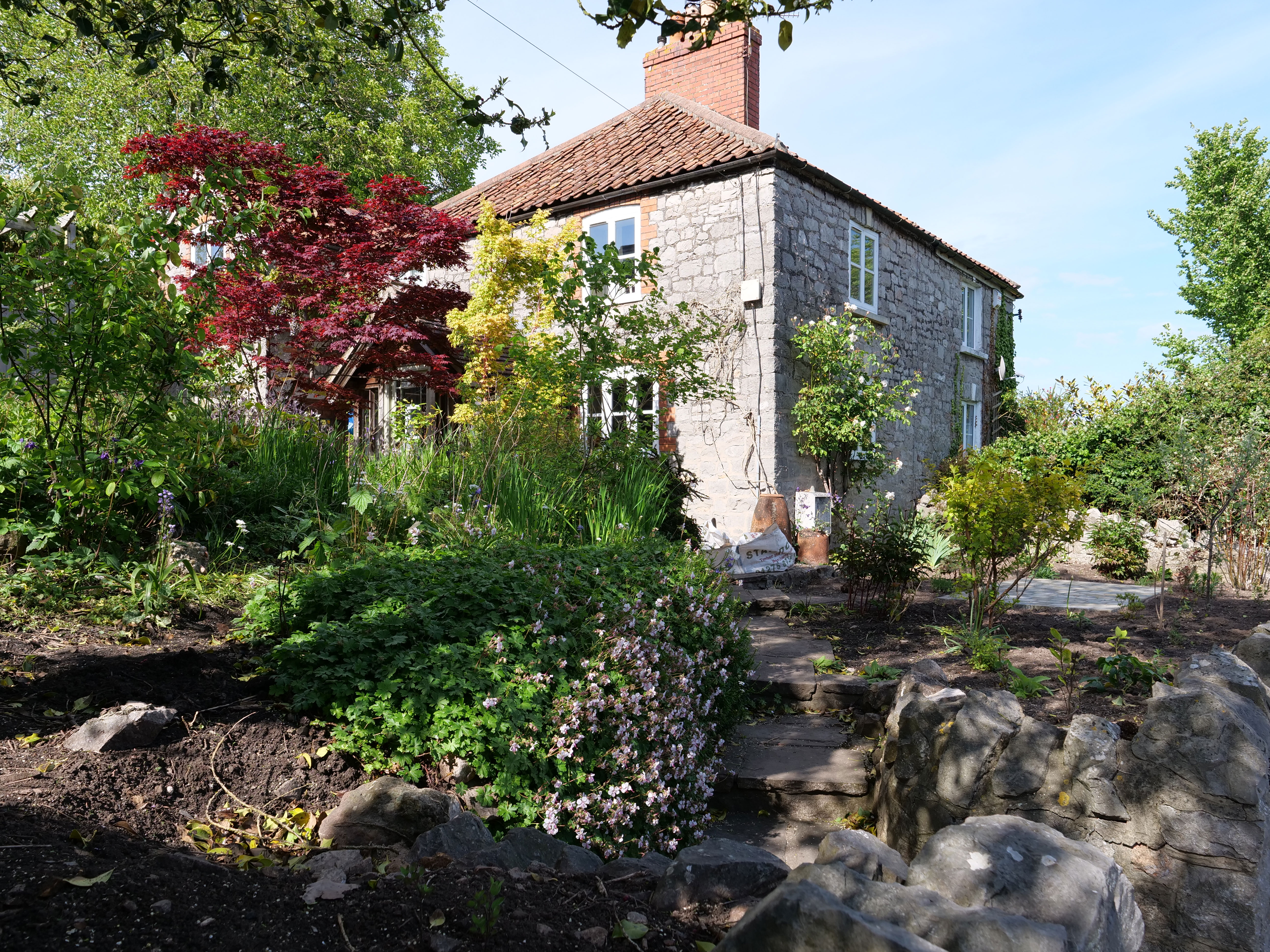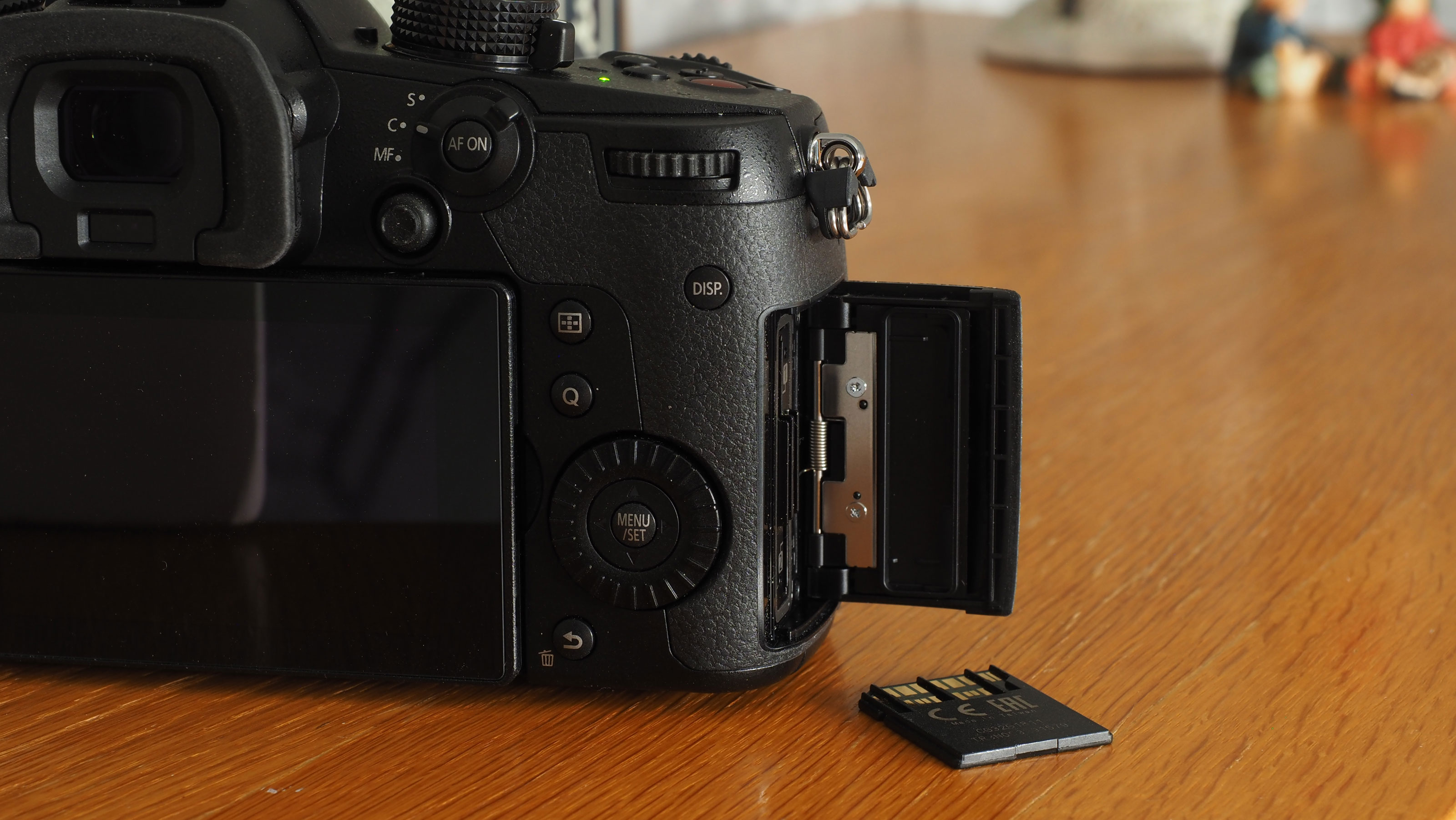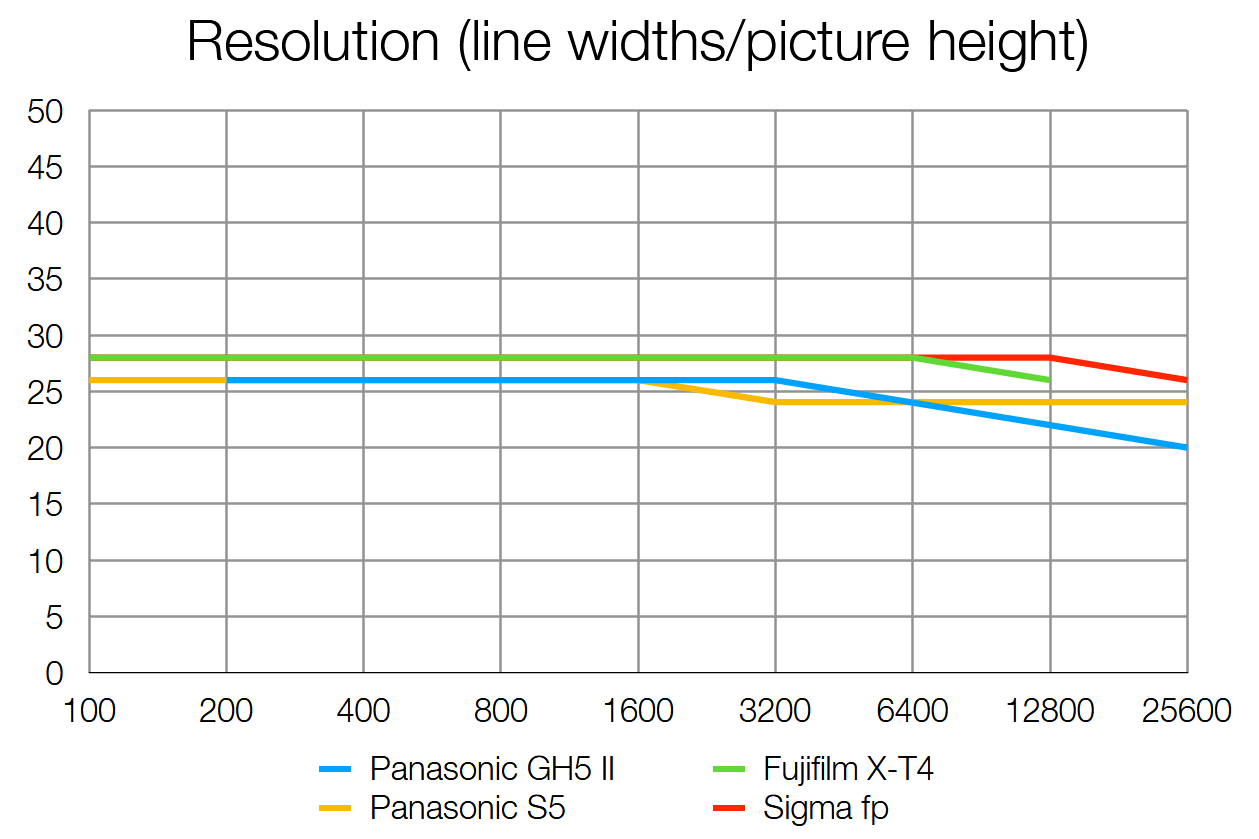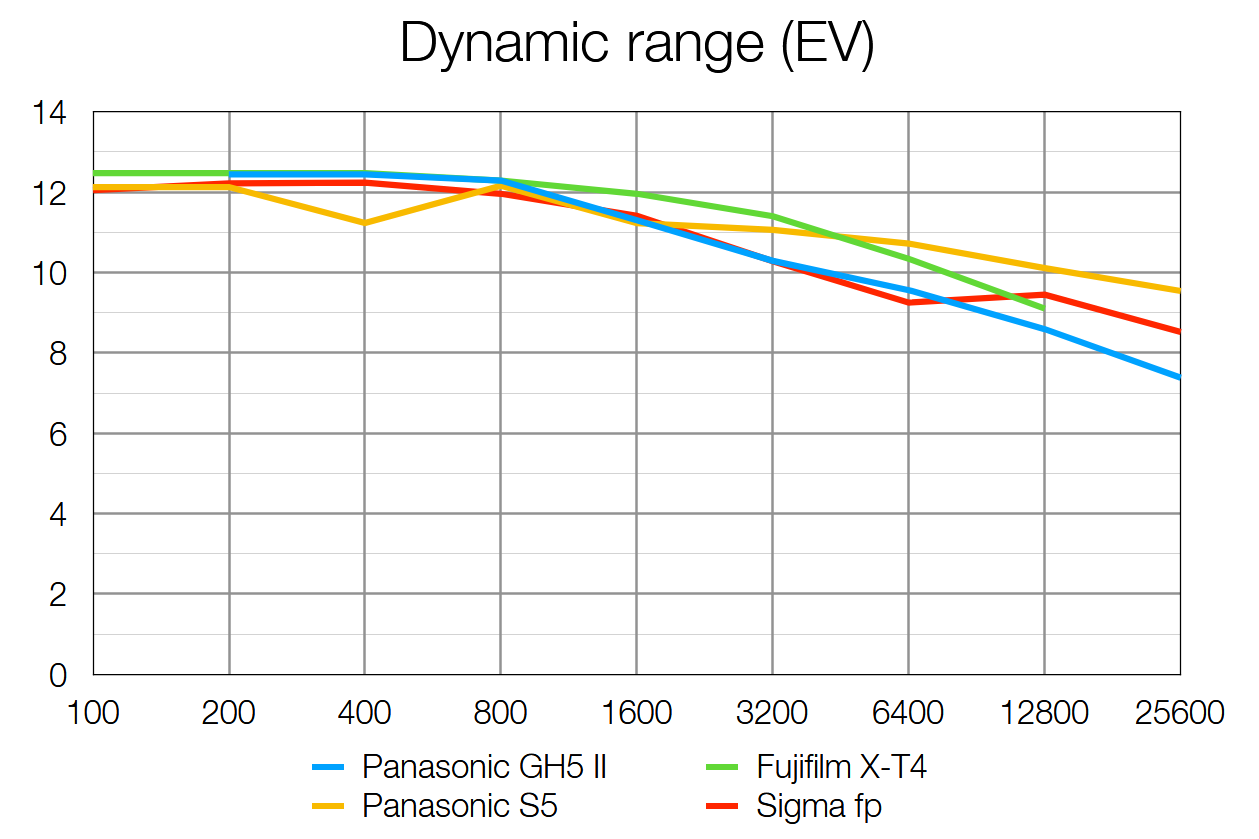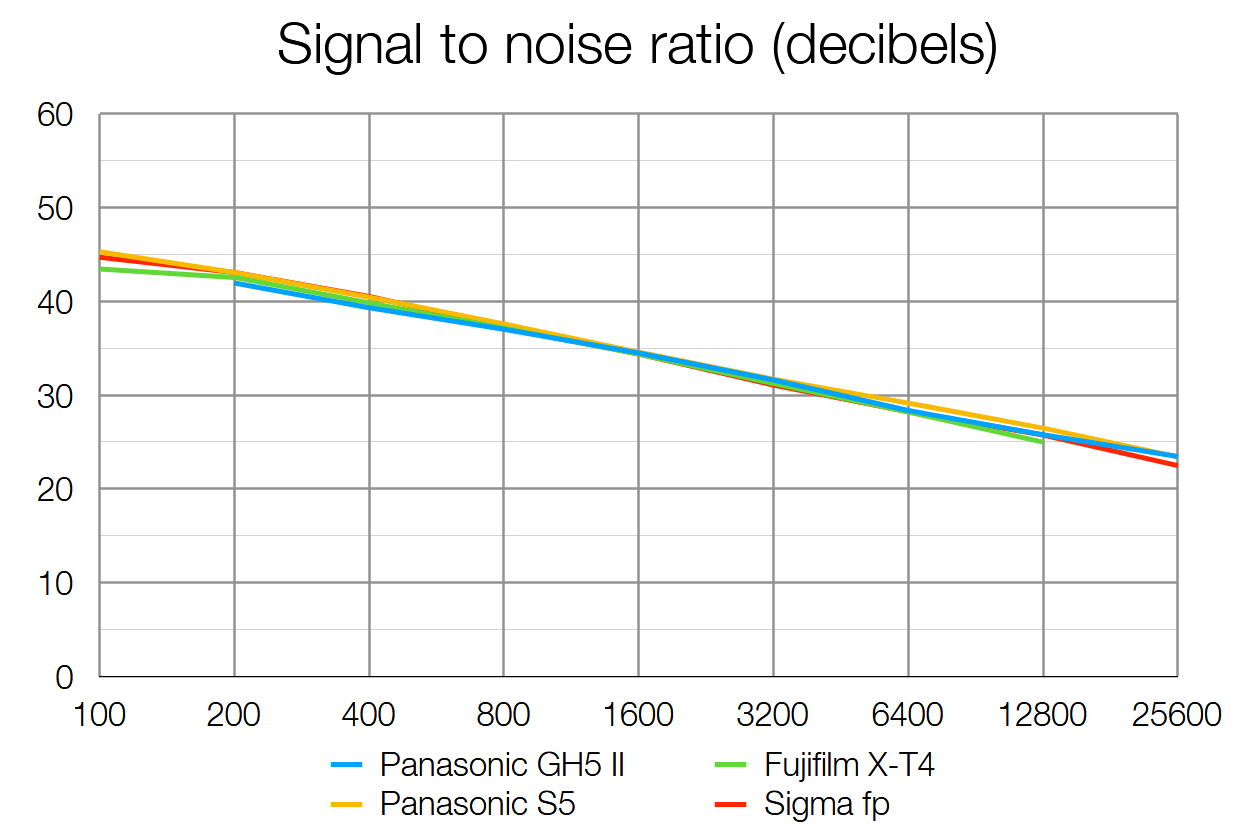Digital Camera World Verdict
The clue is in the name. A Mark II version of anything is likely to be a refresh rather than a whole new camera, and it’s the same here. But while the GH5 II might appear superficially similar to its predecessor, it incorporates a large number of improvements and additions that make quite a difference when you add them together – and they are even more impressive given the price.
Pros
- +
6.5 stop image stabilization
- +
Numerous video enhancements
- +
V-Log L included
- +
Bigger buffer for stills
Cons
- -
Not worth upgrading from a GH5
- -
Smaller 3-inch screen
- -
Bigger battery but little gain
Why you can trust Digital Camera World
The Panasonic Lumix GH5 II is a new version of the GH5, a camera that was ahead of its time when it was launched in 2017. The GH5 was the vanguard of a new generation of hybrid stills/video cameras and its 4K 60p recording capability was stellar then and pretty stellar now.
So the GH5 II has a tough act to follow, and inevitably there will be those who feel that Panasonic hasn’t gone far enough – to be fair, the original GH5 didn’t leave it much room! Not only that, the new Panasonic GH6, still in development, is likely to be the new flagship powerhouse in the Lumix G range. This does make things more confusing still for Panasonic fans, who already might have a tough job choosing between the do-it-all Panasonic Lumix G9 and more video-focused cameras like these.
• Read more: Panasonic Lumix GH5 II vs GH5 | Panasonic Lumix GH5 II vs S5
In fact, what Panasonic has produced is a camera that keeps the GH5 concept fresh and current. There’s probably not enough here to tempt a GH5 owner into upgrading, but any new buyers looking for a powerful 4K hybrid camera without the cost and weight of a full frame system may just have found the ideal candidate.
The Micro Four Thirds sensor used by Panasonic’s Lumix G cameras doesn’t usually get a lot of respect from the full frame crowd, but it has a lot going for it. The 20.3MP sensor has more than enough resolution for oversampled 4K video and enough for most kinds of stills photography. In addition, it means smaller cameras (well, admittedly, not here), smaller and lighter lenses and a lower price point.
It’s also a lot easier to stabilise a smaller sensor than a large one, and get the kind of smooth handheld run and gun style video that’s so much in demand right now from vloggers and content creators.
Specifications
Sensor: 20.3MP MFT Live MOS sensor, 17.3 x 13mm
Image processor: Venus
AF points: DFD contrast AF, 225 points
ISO range: 200-25,600 (expandable down to ISO 100)
Stabilization: 5-axis, up to 6.5 stops
Max image size: 5184 x 3888px
Video: C4K/4K UHD up to 60p (4:2:0 10-bit internal recording), 30p (4:2:2 10-bit internal), or 60p 4:2:2 10-bit over HDMI with simultaneous 4:2:0 internal recording
Viewfinder: 3.68m dots, 100% coverage, 0.76x magnification
Memory card: 2x SD/SDHC/SDXC, UHS-II, V90 compatible
LCD: 3-in vari-angle touchscreen, 1.84m dots
Max burst: 12fps AF-S, 9fps AF-C, 108+ RAW, 999+ JPEG
Connectivity: Wi-Fi, Bluetooth
Size: 138.5 x 98.1 x 87.4mm
Weight: 727g body only, including battery and memory card
The best camera deals, reviews, product advice, and unmissable photography news, direct to your inbox!
Key features
Key features of the Panasonic Lumix GH5 II include its 20.3 megapixel Micro Four Thirds sensor, 12fps/9fps continuous shooting capability and big buffer capacity, its updated and more powerful in-body image stabilization and – especially – its enhanced video capabilities.
The sensor is essentially the same one that Panasonic has been using across its Lumix G camera range for some time now, though it’s matched up with a new, faster Venus processing engine which brings new and enhanced video modes and contributes towards this camera’s burst shooting abilities.
This is a camera designed equally for stills and video, though in this latest version it’s the video capabilities that have received most attention. Nevertheless, with its 20MP sensor, fast burst mode and enhanced burst depth of over 108 raw files or more than 999 JPEGs, this is a camera that’s also very effective at stills and action photography.
20 megapixels is enough for many kinds of stills photography, and when combined with the GH5 II’s 4K 60p video capability, pre-installed V-Log L profile, support for C4K, VFR (Variable Frame Rates), 10-bit internal recording and more, it’s a serious video tool too. This is a properly powerful hybrid camera for photographers and filmmakers who need both stills and video in the same camera and probably in the same shoot.
Panasonic says its newly updated in-body stabilization system now offers up to 6.5 stops of shake compensation, and this works alongside in-lens stabilization, where available, and electronic stabilization for smoothing out handheld video footage.
Another major addition in this camera is support for wireless streaming via Panasonic’s LUMIX Sync mobile app, where the previous GH5 only supported USB streaming via a PC and Panasonic’s own streaming software.
Comparisons with the previous Lumix GH5 are inevitable, especially since that camera has gained a very strong reputation amongst filmmakers. Many of the GH5 II’s improvements are subtle and involved – mostly those associated with video frame rates, bit depths and formats.
The Lumix GH5 II’s headline specs – 4K video at up to 60p – are not unusual by today’s standards, but they don’t tell the whole story. This is a very powerful, very rounded camera that won’t impress everyone, but is likely to appeal to serious filmmakers who can look past the headlines.
Build and handling
The Lumix GH5 II is pretty big for a Micro Four Thirds camera. It’s as big as a mid-range DSLR and bigger than some full frame mirrorless cameras, notably Panasonic’s own Lumix S5, but this size makes the GH5 II very easy to get a good grip on, and it feels a natural fit with mid-sized lenses like the Leica 12-60mm we tested it with.
First impressions are that it feels a tad plasticky for such a high-end camera, but the magnesium alloy construction and weatherproofing say otherwise. It’s not as hard-edged as many rival mirrorless cameras and does feel a little more comfortable in the hand.
The EVF is the same as the 3.68m dot viewfinder used on the Lumix GH5. It’s sharp and clear, and while it doesn’t have the resolution of Panasonic’s more up-market Lumix S cameras (or the remarkable Sony A1), it’s perfectly adequate.
The rear screen is a vari-angle type, and Panasonic says it has improved its luminosity and color rendition for outdoor use – though the new screen is a 3-inch display, while the one on the GH5 is a 3.2-inch screen. On a video camera, where you may not be right up close when you’re filming, we’d rather have a bigger screen. And, improved or not, the new screen still has to be turned to maximum brightness to be clearly visible on a bright day.
The menu system is excellent, and a model of clarity both in its organization and its appearance – the menu text is big and easy to read. There are a LOT of video permutations to get your head around, however, and some features are unavailable unless you’ve selected something else first, e.g. VFR mode needs the MOV format, which is set in another menu. The interface might be very clear, but you’ll still need to spend some time working out where the options are and what they do.
Also on the back is a really useful S/C/MF focus mode lever with a central AF On button. Too many cameras bury the focus models in their digital interface, so it’s great to have them so visible and accessible. Nearby is a focus lever for when you don’t want to use the touchscreen.
On the top of the camera there is a record button clearly marked in metallic red but not so easy to find by feel – a raised ‘pimple’ would have helped here, as it’s closely surrounded by four other buttons for different camera settings and pressing these by accident is really annoying.
Also on the top is a big and chunky main mode dial with a separate setting for the video mode – though you can still press the Record button in any mode. There’s a locking button in the top of this dial to prevent accidental changes.
Over on the left of the top plate is a smaller drive mode dial with positions for the GH5 II’s single shot, burst mode and self-timer modes, plus its 6K Photo modes.
Performance: stills
The Lumix GH5 II is hard to fault for stills photography. The 20MP Micro Four Thirds sensor does place its own limits on the resolution and the high ISO performance, but our lab tests repeatedly show that, small as they are, these MFT sensors hold their own very well against larger APS-C sensors.
The autofocus is very fast, responsive and positive for single images. We didn’t have an opportunity to test the GH5 II with fast moving subjects in burst mode, where some users complain of focus ‘dithering’ caused by Panasonic’s DFD contrast AF system, but for regular stills work it’s very good indeed.
We are still waiting for software updates to camera raw conversion tools to work with the GH5 II’s raw files, but its JPEGs are clean, crisp and sharp. The Leica-branded 12-60mm f/2.8-4 we used for our tests is not cheap, but it’s a pretty stellar performer, offering edge to edge sharpness and consistent performance across its wide 5x 24-120mm equivalent zoom range.
The new 6.5-stop in-body stabilization system in this camera is extremely impressive. The more you push your luck with slow shutter speeds, the more you risk some unsharpness, but we captured sharp images with 0.5sec and 1sec exposures we wouldn’t attempt with other cameras.
The GH5 II’s stabilisation doesn’t make tripods redundant – tripods do much more than prevent camera shake – but it does make it possible to shoot in what look like impossible conditions, or to use lower ISO settings that don’t push the MFT sensor quite so hard in low light.
Performance: video
The video performance is no less impressive. The GH5 II handles focus shifts smoothly and silently, and you can dip into the camera settings if you’re not happy with the focus speed. You may want to experiment with this with the automatic face/body/animal/eye AF modes and more rapidly moving subjects – or you can use a single focus point and tap the screen (softly!) while filming to select a different AF point for quick and dirty ‘pull focus’ effects.
Here's some sample video we shot with the Lumix GH5 II. We didn't test the face/body AF but we did check focus transitions and focus speed with manually selected AF points – and we also wanted to see how effective the 6.5-stop IBIS was for video, together with the E-Stabilization and Boost I.S.
Opinions about Panasonic's DFD AF system are highly polarized, however, perhaps because it depends so much on your style of shooting. If you rely heavily on face/body/eye EF, you might find the GH5 II better than the original GH5 but still not in the same league as rival cameras with phase AF. If you focus manually or like to select your own AF point, however – and you can do this while filming – you might wonder why everyone's complaining. The main issue is likely to be if you're trying to film yourself and move around the frame, where you can't even see how the camera is focusing, let alone try to correct it.
The stabilization for static handheld shots verges on the uncanny. If you switch everything on, including lens IS (where available), the camera IBIS, the optional E-Stabilization and Boost IS (these come with a slight crop factor), the live view steadies up to become so rock solid that you want to check you’re not in playback mode by mistake.
If you want to try any camera movements, or you are moving yourself, you should switch off the Boost IS but keep the rest enabled. Run and gun video or handheld camera pans are not so easy for the IBIS – basically, in-camera stabilizers don’t have the range of movement needed. They’re great for smoothing out ‘jitters’, but they can’t replace a gimbal – and that applies to the GH5 II as well. For static handheld filming and the slowest and steadiest of camera movements, it’s excellent. For anything faster and more active, it’s quickly out of its depth – unless your technique is very, very good.
For us, handheld run and gun shooting without a gimbal is just too chancy, and the Lumix GH5 II has done nothing to change our minds.
It's also worth pointing out that video editors like Final Cut Pro and even the humble iMovie have software based stabilization that is very often way more effective than any in-camera e-stabilization.
Lab results
For our lab data comparison, we compared the Lumix GH5 II with three rival stills cameras that perform strongly when shooting video: the Fujifilm X-T4, Sigma fp, plus a rival from Panasonic's own stable, the full-frame Lumix S5,
Resolution:
Resolution is measured using standardized text charts which give results in line widths / picture height, which is independent of sensor size.
Surprisingly, the 20.3MP GH5 II is able to match the full-frame Lumix S5 for capturing fine detail at lower sensitivities. It goes to show that even with a slightly lower megapixel count and a significantly smaller physical sensor area, the four-thirds sensor design is still able to produce extremely sharp images straight out of the camera.
Dynamic range:
Dynamic range is a measure of a camera's ability to record extreme brightness ranges and still retain detail in the brightest and darkest parts of the scene. It's measured in EV (exposure values, or 'stops').
The GH5 II is capable of capturing huge dynamic range at lower sensitivities, though as ISO sensitivities rise, its sensor limitations start to become apparent. At ISO 1600 and above, the GH5 II starts to trail its rivals, capturing as much as 2 stops less dynamic range than the full-frame Panasonic Lumix S5 when you reach ISO 25600.
Signal to noise ratio:
This test compares the amount of random noise generated by the camera at different ISO settings as a proportion of the actual image information (the 'signal'). Higher values are better and we expect to see the signal to ratio fall as the ISO is increased.
All four comparison cameras are very closely matched in this test, generating similarly clean images with low noise levels.
Verdict
Many will be disappointed that the GH5 II is not a bigger leap forward from the GH5. In reality, it’s probably not meant to be an upgrade, but a ‘refresh’ that keeps the GH5 concept fresh and competitive for new buyers. And it certainly does that. It sticks with Panasonic's DFD contrast AF system which is improved but still polarizes opinion, even within the DCW offices.
This is big and chunky camera, but none the worse for that, and it doesn’t feel unbalanced even with premium zoom lenses like the Leica 12-60mm. Its still image and video specifications don’t break any boundaries these days, but it’s the way they are combined in a single camera that’s impressive.
According to the specs, what the GH5 II does is unremarkable, save for some more advanced video modes. In practice, its combination of still image quality, video quality, stabilization, burst mode, wireless streaming capability and all-round handling mark it out as a camera that is so much more than just the sum of its parts.
• Pre-order the Panasonic Lumix GH5 II from B&H
• Pre-order the Panasonic Lumix GH5 II from Adorama
• Pre-order the Panasonic Lumix GH5 II from Park Cameras
Read more:
• Best camera for video: a general guide
• Best cameras for filmmaking
• Best vlogging cameras
• Best cinema cameras
• Best mirrorless cameras
• Best Panasonic cameras

Rod is an independent photography journalist and editor, and a long-standing Digital Camera World contributor, having previously worked as DCW's Group Reviews editor. Before that he has been technique editor on N-Photo, Head of Testing for the photography division and Camera Channel editor on TechRadar, as well as contributing to many other publications. He has been writing about photography technique, photo editing and digital cameras since they first appeared, and before that began his career writing about film photography. He has used and reviewed practically every interchangeable lens camera launched in the past 20 years, from entry-level DSLRs to medium format cameras, together with lenses, tripods, gimbals, light meters, camera bags and more. Rod has his own camera gear blog at fotovolo.com but also writes about photo-editing applications and techniques at lifeafterphotoshop.com
